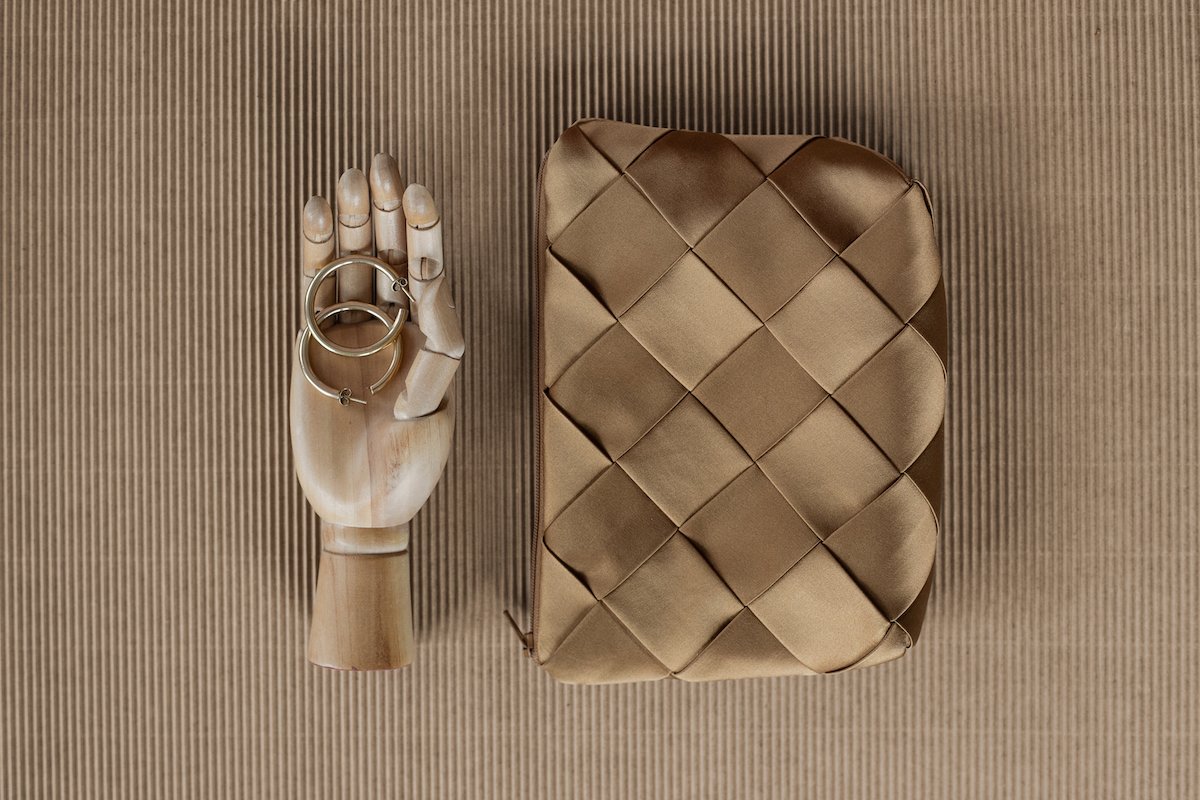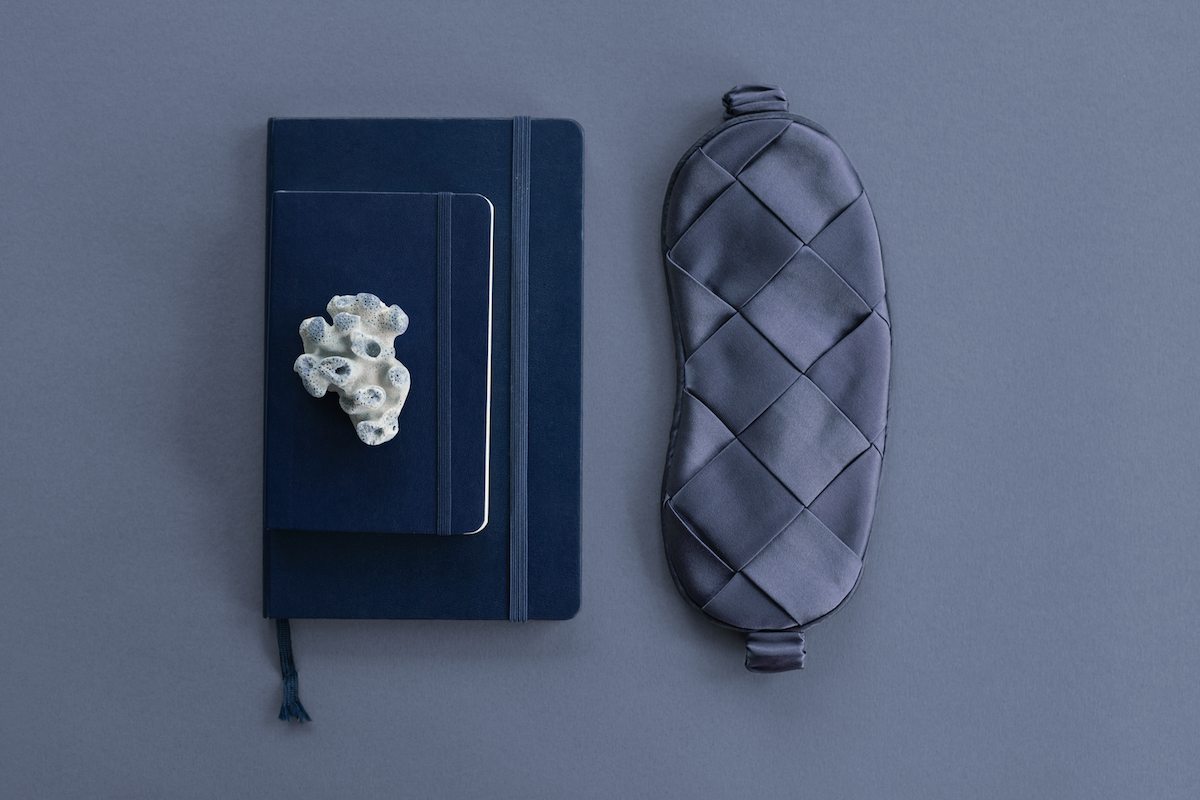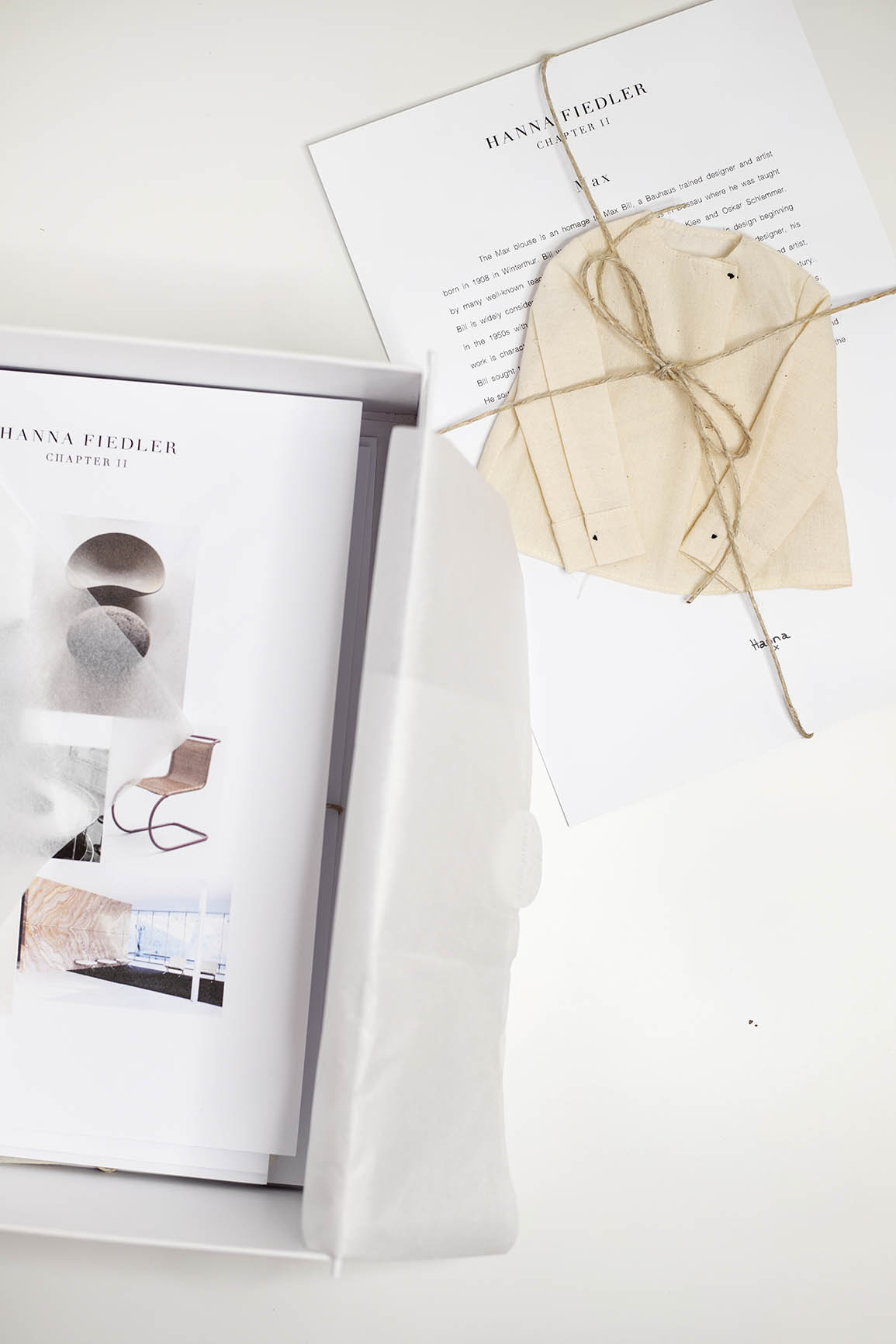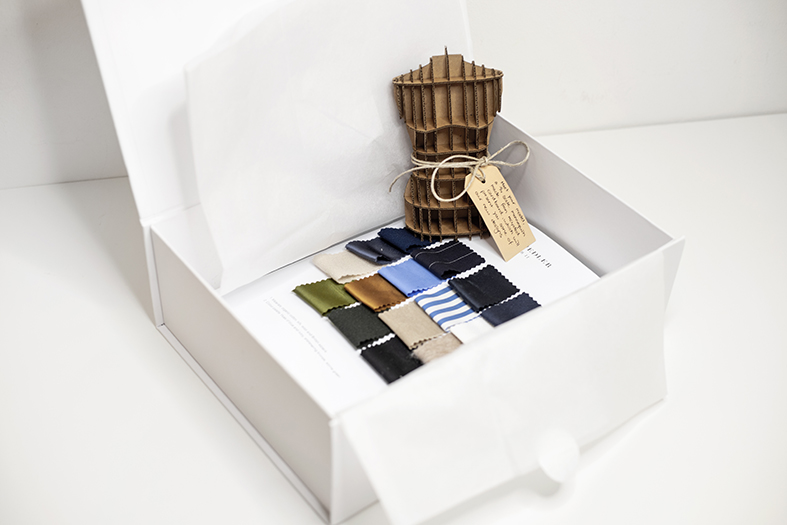Hanna Fiedler weaves her magic
Designer Hanna Fiedler has a way of being crafty around luxury, which in itself is a gift: during times of pandemic, creative thinking has been the saving grace for a number of companies. First, Fiedler prepared a very clever "box" in order to present her collection, Chapter II, to the UK press, which was appreciated by some of the most important names in the business. The young designer has also taken on sustainable fashion with a sense of verve and excitement that is inspiring. I caught up with her this week to discuss her latest project - a fabulous range of accessories made out of leftover silk scraps.
Anne: I would love to talk about these new accessories that you have added to your line. Was this a recent idea? What makes them special?
Hanna: Actually, we started making the Pochette [purses] over a year ago because we thought it would be wonderful to come up with something for [fabric] leftovers and since day one of production, I always asked to keep any scraps.
Anne: So, do you literally make these purses out of scraps of material?
Hanna: Yes. I ended up having quite big bin bags filled with these silk scraps that I have been trying to find some use for. And it's one of these things, where you have this constant background task going on [at the back of your mind]. I was always thinking about what to do with these scraps; how to create a nice gift that we could share with people. I kept trying to find a solution that wasn’t crafty, something that fits the brand. Then I was weaving silk for a collection sample and it just clicked and I felt it was just the right thing: we can use the weave for the pouch! And the beauty of it is actually that you do need quite a lot of fabric, but we can use really small scraps because some of the strips we need are only five centimeters [long].
Anne: I love this - it’s amazing you found a use for such a tiny pieces of material.
Hanna: Yes, the pieces we can reuse for that are actually really small and it reduces the waste really drastically. And with the sleep masks now, even more so because the pieces can be even shorter than [those of] the pouches.
Anne: Was this new line actually part of your plan?
Hanna: No. Doing accessories wasn't really on the horizon. It was more finding a solution of what to do with the leftover fabric in a way that fits with the values and the aesthetics of the brand, that doesn't just seem like an afterthought. And so, we're now looking into what else we can do with it, but one thing at a time.
Anne: What have you got in mind?
Hanna: If we get a studio, what I'd like is to frame them [weaves of leftover fabric] and put them on the wall, as pictures. I just love this [silk] weave, I think it's so beautiful, the way the light reflects from it. And as wall decoration, I think they could be really nice, with the color and the light. That's what is so extraordinary about it because, in a way, that pattern is so simple and minimalistic, and yet you get such depth with the weave, that it looks luxurious but still understated.
I think that's quite different, difficult to do with anything that's like a decorative technique. It often looks decorated and gets over the top quite quickly. I love how understated it actually still is.
Anne: Can you tell me about the people who are making these because I know that you choose your manufacturers very carefully and that your make is local?
Hanna: So, it's 50-50 because 50% of the work's actually done here [at the Hanna Fiedler atelier]. At the moment, I have an amazing intern called Adelaide, who is weaving and she's loving it just as much as I do, luckily [for us] because it's quite time consuming.Then we pack everything up, already pre-cut and send it to Larissa.
Larissa runs a workshop of around 10 women. Most of them are Russian actually so I always put my little Russian knowledge to the test there. The great thing about her is that she is incredibly supportive of me being a young brand and is willing to work with us even though production and sampling is quite patchy for us still. It's not easy finding a manufacturer that’s happy to support you through that phase. It's really amazing and she focuses mainly on any soft materials, so great with silks and dresses, skirts.
Anne: That sounds like the ideal manufacturer to have on your books.
Hanna: Yes, I remember the first time walking in, having been recommended by a woman that had set up Victoria Beckham on the more technical side in the very beginning. And she had said Larissa is going to be great for you.
And I walked in and it was like going to heaven because the studio is on two floors and you have floor to ceiling windows, so it's light flooded, everything's white. And so, you come in and it's like this beaming light of light. It was a sunny Monday morning and I just loved how clean everything was. Some of the factories I had seen hadn’t seemed like nice places to work in. This one did remind me a bit of my days at the Opera House [in Berlin, where Fiedler trained as a bespoke tailor], because the lady there kept the workshop was also pristinely clean. I would love to be a seamstress there. Whenever we go there, the girls always offer homemade treats. They usually have lunch together, where everyone brings homemade bits and they share it with everyone, which I think is so nice. So it seems just like a great place for the women that work there, which is fantastic.
Anne: I am so excited about this new line and look forward to seeing where you take it. Sustainable fashion is such an exciting place to be in right now. Good luck!
Hanna: Thank you!




